
views
Preparing Lace and Selecting Materials

Pre-wash your fabric. Lace can be stiff and difficult to work with before it has been washed. To make it easier to sew your lace fabric, wash it gently by hand and then lay it flat to dry before you begin sewing. Use a gentle fabric detergent and lukewarm water to wash your lace by hand in a clean sink or bucket. Avoid wringing out the lace. Squeeze it gently to get the excess water out.
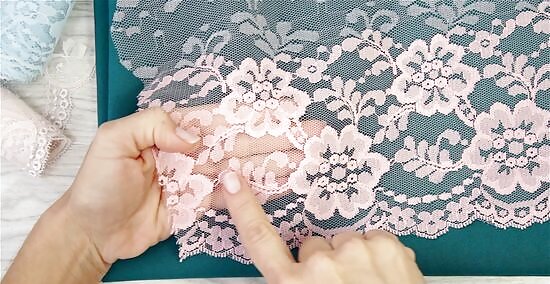
Identify the right and wrong sides of the lace. Right and wrong are sewing terms for the front and back of your fabric. The front of the fabric (the side you want to be visible) is the right side. The back of the fabric (the part you want to be hidden) is the wrong side. Lace may have an easy to identify right and wrong side, or it may be difficult to tell the difference. In some cases, the sides may be identical. Inspect your lace fabric closely to determine which side is the right side and which side is the wrong side. Try marking the wrong side with chalk on all of your lace pieces. This will help to ensure that you sew the lace with the right sides facing out. Identifying the right and wrong sides of your lace fabric will help to ensure that the right side is facing out on your garment.
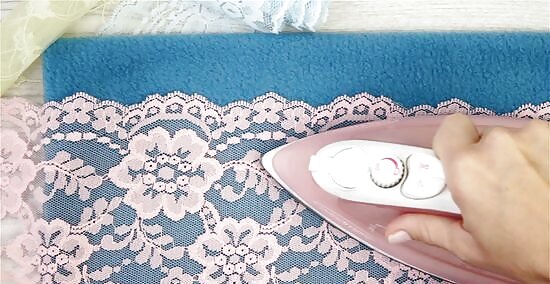
Consider ironing your lace. Your lace fabric may not need to be ironed if there are no wrinkles in it. However, if there are wrinkles or if you want to be extra sure that it is completely flat, then you can iron the fabric before you sew it. Put your iron on the lowest setting and iron the fabric in sections until you have worked out all of the wrinkles. You may also want to lay a towel or cloth over the lace to protect it while you iron it.
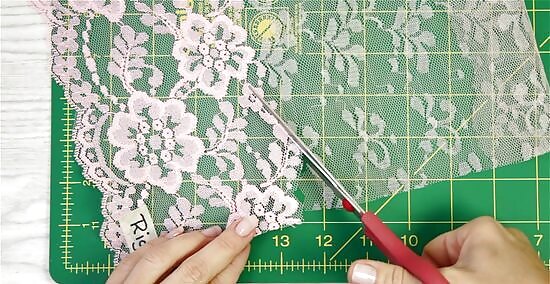
Cut your lace fabric carefully. When you are cutting lace, it is important to cut around the edges of the major design elements rather than trying to cut the lace straight across. For example, if your lace has scalloping, then you would need to cut just outside of the scallops. If the lace has flowers on it, then cut around the edges of the flower petals. Do not cut right through the major design elements of your lace or you may damage it.
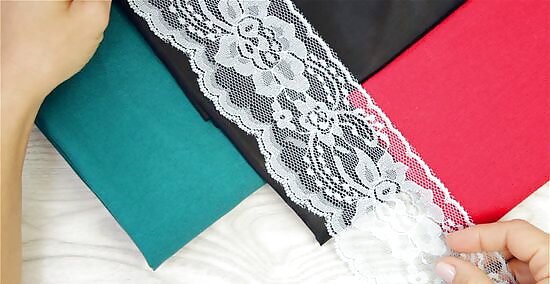
Choose your lining fabrics. Your lining can either match the color of your lace, or it can contrast with the lace and provide some color to your design. For example, you could use black lining with black lace, or use a red or pink lining to add some color to the lace. Avoid using prints as lining for lace material because this will probably clash with your lace. Stick to solids for your lining. Lace is often lined with satin in formal dresses and skirts, but you can experiment with other types of materials as well. Try lining your lace with cotton or jersey for a casual alternative to satin lining.
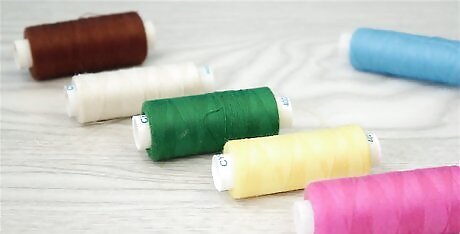
Select a thread that matches the color of your lace. When you sew lace, the goal is to create an almost seamless look. Using a thread that matches the color of your lace will help you to do this. You can use any standard weight or all-purpose sewing machine thread, but make sure that the color matches your lace. Try taking a swatch of your lace fabric with you to your local craft or fabric store and use it to find the color of thread that best matches your lace. A poly-blend thread is stronger than cotton thread, which may be more likely to break when you're working with lace.
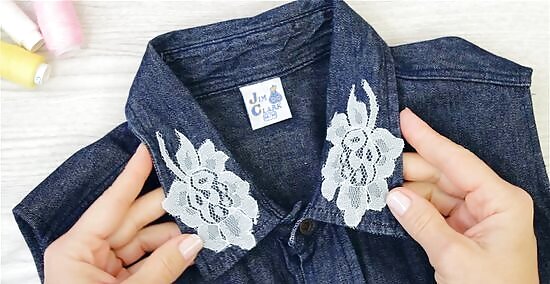
Sew by hand if you only have a small amount of lace to sew. Some lace sewing projects may only require hand sewing with a needle and thread. You can hand sew if the amount of lace you want to add to a garment is small or if you are working with a very delicate fabric. If you decide to hand-sew your lace, then all you will need to do is thread a needle with some thread that matches your lace and then sew along the edges of your lace to attach the piece to your garment.
Using a Sewing Machine
Install a new universal needle. It is important to install a new needle before you begin sewing your lace. This will help to ensure that the needle will not snag on the lace material or have trouble penetrating it. Sewing needle sizes 60/8, 65/9, or 70/10 (for thicker lace) are all good options for sewing lace. It's a good idea to use a thinner needle when you're working with lace.
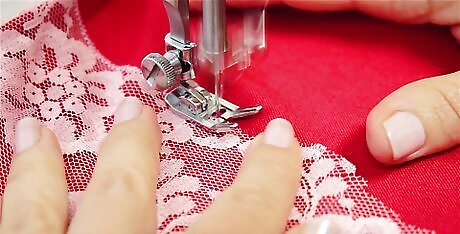
Use a medium width and length zigzag setting. A medium width and length zigzag stitch is ideal for sewing lace onto a lining or as an applique. Set your machine to the zigzag stitch setting and then adjust the stitch length to the mid-range setting on your machine. Sew the zigzag stitch along the edges of the lace to secure it. Do your best to sew the zigzag stitch right over the edges of the lace to help the stitches blend in with the lace.
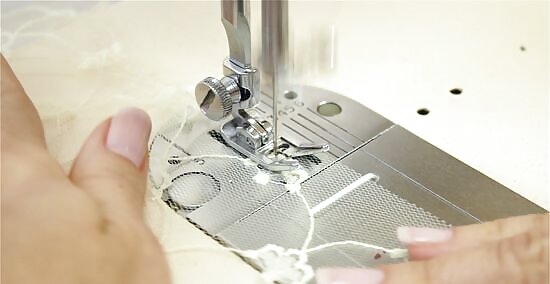
Sew a baste stitch to gather lace. If you want to gather a piece of lace, such as for use in a skirt or dress, then start by adding a baste stitch around the edge of the fabric. A baste stitch will make it much easier to gather the fabric than trying to pin the lace and then sew it. Set your machine to the baste stitch setting and then sew along the edge that you want to gather. Hold onto one of the ends of baste thread and push the lace material in the opposite direction to gather it. Then, repeat this on the other side. Keep moving the lace inwards until you achieve the level of gathering you want. Then, you can sew your gathered lace onto your garment as desired.
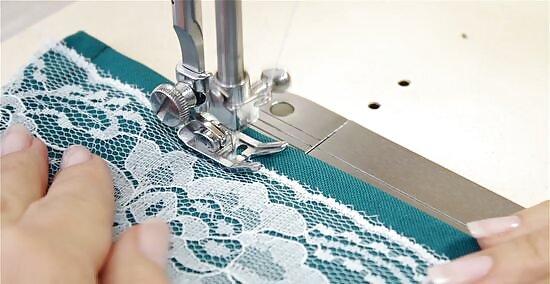
Consider using a straight stitch. Usually, using a straight stitch on lace will result in a visible seam, so you may want to avoid it if you are trying to incorporate your lace without a visible seam. However, if you are working with a type of lace that has straight lines in it, then you may be able to use a straight stitch. Try to line up the stitches with the lines in the lace for the best results.
Avoiding Common Problems
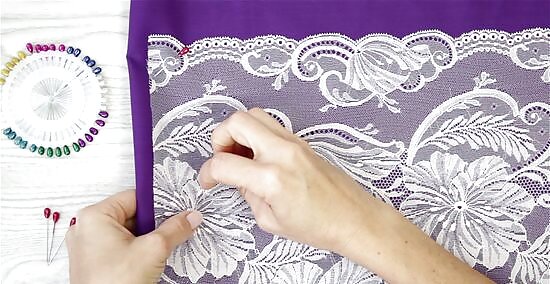
Secure your lace before you sew. You can pin your lace together or to lining fabric by inserting pins through the denser areas of the lace. However, if you have trouble keeping your lace in place using pins, then you can also use binder clips on the edges of your lace to keep it in place.
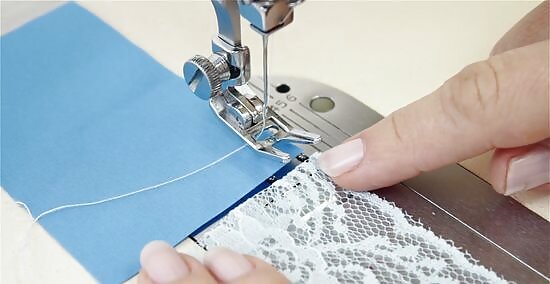
Start your stitches on a piece of scrap fabric. Lace can easily get pulled into the feed dogs (gears that move the fabric along) of your sewing machine when you are sewing it without a lining behind it. To prevent this problem, start your stitches on a piece of scrap fabric and then transition to sewing the lace. Make sure that the scrap fabric does not overlap with the lace fabric. This will make it easier to cut the stitches between the lace and scrap fabric to separate the two when you have finished sewing.
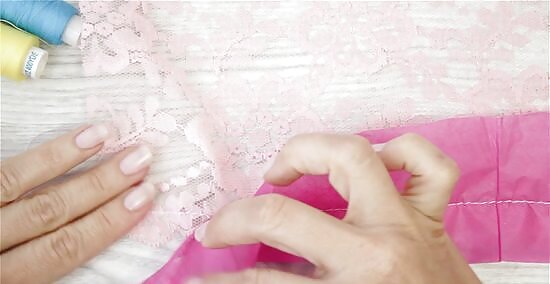
Sew over pattern paper or tissue paper. Another technique for preventing your lace from getting snagged in the feed dogs is to sew your lace over a piece of pattern paper or tissue paper. The pattern or tissue paper will act as a lining, and then you can tear the paper away from the lace after you are finished sewing the lace. Tear the paper away from the lace carefully to avoid damaging the lace.
Look for matching edges when you are connecting two pieces. Sewing two pieces of lace together to form a seam can be tricky. However, you can make this easier by strategically lining up the edges of your lace. Look for areas where the lace will match up best and then line these areas up. For example, if you are sewing two pieces of lace together that have flower petals on the ends, then you might be able to find a way to make it seem like the petals are interlocking. Sometimes it might be necessary to overlap your lace pieces slightly to achieve a seamless look. Try different ways of connecting your lace before you sew to see which option looks best. Consider using an iron-on webbing to reinforce your sleeves if you have a really delicate lace.
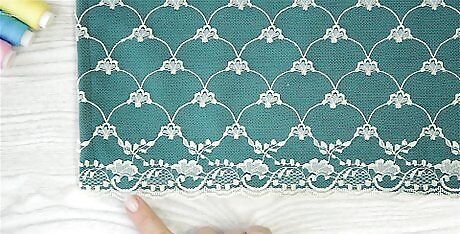
Leave raw edges unhemmed in most cases. Hemming lace is often unnecessary and may result in an unappealing finish. Instead of hemming, you can leave the edges raw. This is especially true for lace fabrics where you have cut around the distinct lace shapes, such as flower petals, zigzags, and scalloping. If you think that your lace fabric would look better with a hem, then use a baste stitch to test it out first. If you like the look of your lace fabric with a hem, then sew a straight stitch over the baste stitch to secure it.















Comments
0 comment